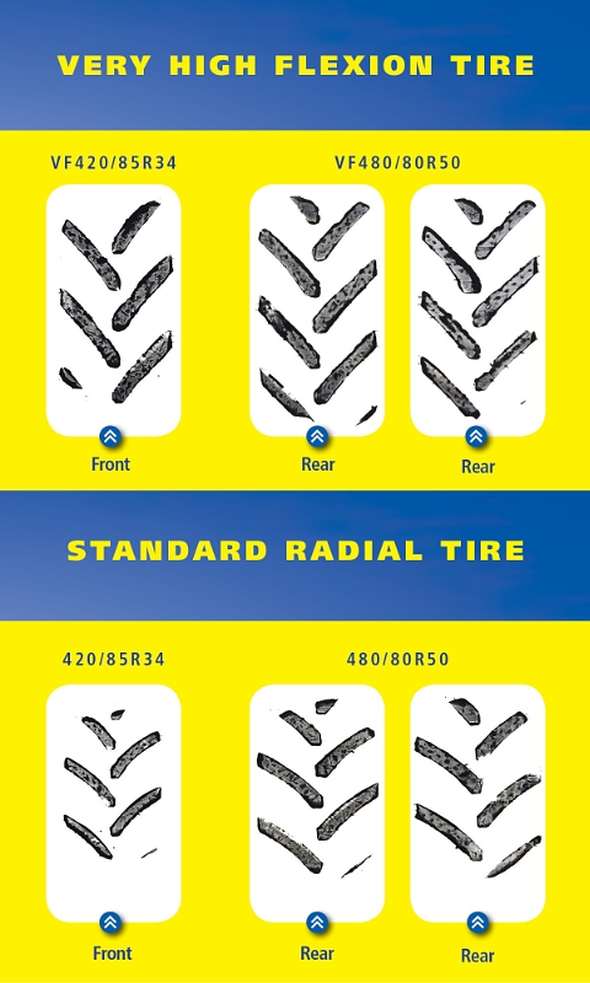Tips To Reduce Soil Compaction In The Field
With lower commodity prices looming, growers are looking for ways to improve productivity and crop performance. Experts say one of the best methods to improve yield is to minimize soil compaction. To do that you should use tires that can operate at a lower air pressure.

The larger footprint of Michelin Ultraflex Very High Flexion (VF) tires reduces soil compaction by spreading the weight of the machine over the largest area possible. Photo credit: PRNewsFoto/Michelin
Farming equipment, including tractors and sprayers, has grown larger and heavier in recent years, so you can cover more acres per day. The downside is it also makes soil compaction a bigger challenge.
“Lower-pressure tires produce a larger tire footprint, which distributes the weight of the machine over the largest area possible to reduce compaction,” said James Crouch, farm segment marketing manager for Michelin Agriculture tires. “In addition, a larger tire footprint provides excellent traction in the field, which can improve fuel economy by reducing slippage.”
Academic research has demonstrated the benefits of lower-pressure tires that provide higher flexion than standard radial agriculture tires, thus reducing soil compaction. According to a Penn State University Extension report, “Topsoil compaction is caused by high contact pressure. To reduce contact pressure, a load needs to be spread out over a larger area. This can be done by reducing inflation pressure.”
Crouch and other experts offer several recommendations to help minimize soil compaction.
- Check and maintain proper tire pressure as temperature changes throughout the growing season, particularly in the spring if new tires or equipment were purchased the previous fall or winter. Every increase of nine to 10 degrees in ambient air temperature can raise tire pressure by one psi, or lower it by that same amount as temperature decreases.
- Reduce total axle load by operating the lightest possible equipment for each application that still efficiently transfers horsepower to the ground with minimal slippage. Ensure that total machine weight conforms to manufacturer specifications.
- Minimize the number of trips over the field and reduce the area of the field on which equipment is operated. Limit heavy machinery to the same lanes through the field each season. Only the controlled traffic lanes become compacted, sparing soil between the lanes.
- Use duals and large-diameter tires, since the larger surface area can help reduce tire pressure against the soil.
- When additional machine weight is needed, use cast iron ballast instead of filling tires with liquid ballast. Liquid ballast changes the flexion of the tires, resulting in a smaller footprint.
“Proper tire management and other practices can help reduce soil compaction, even though it can’t be eliminated totally,” Crouch said. “Protecting the soil is one of the best investments farmers can make to improve their crop performance and their bottom lines.”
For more information on lower-pressure tires, visit www.MichelinAg.com.
Source: Michelin news release










